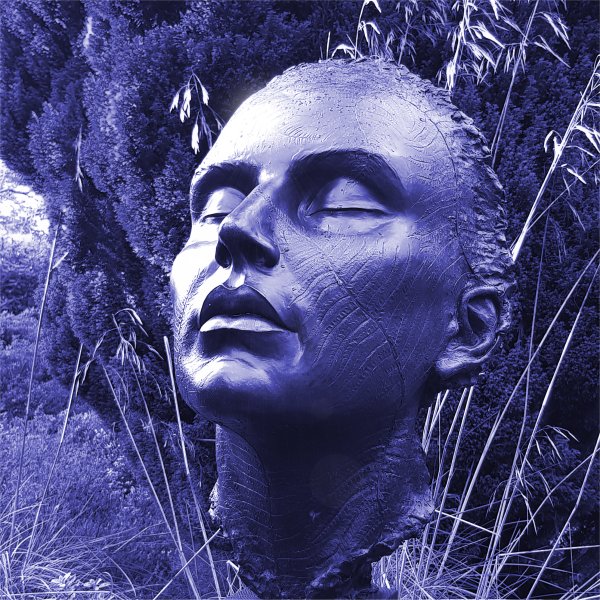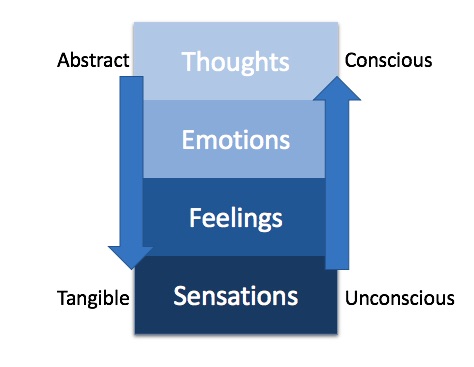
Most of us are brought up to believe that the ability to think is the most important thing to learn. We spend years in formal education developing our minds and building knowledge, but hardly any time, in most cases literally no time at all, learning what it really means to be human. As well as thoughts, we all know we have emotions, feelings, and sensations, but are not taught what these really are or how to work with them effectively.
Sensations can be external and internal, so include all the senses as well as the physical sensations in the body. Sensations are the low-level signals that arise from the body and senses before they are interpreted and made sense of by the mind, which is the process of perception. So, for hearing, the sensation would be the raw sound of a bird call and the perception would be that it’s a magpie. Physical sensations are part of the somatosensory nervous system which extends throughout the body and includes the skin, muscles, bones, the cardiovascular system, and internal organs.
We begin to realise that our body is relatively independent from the world around us at a young age, as we develop an individual identity based on our body – a sense of “me”. Although we may have been curious about our body when we were children, our relationship with our body tends to change dramatically when we reach adolescence. During our teenage years, we become overly self-conscious as we compare our body with our peer group and what’s considered attractive at the time. And as we get older, apart from occasional health issues, aches or pains, for many of us our body seems to slip into the unconscious background of our experience, numb and hardly noticed.

One useful way of thinking about the relationship of sensations to our experience is to view sensations, feelings, emotions, and thoughts as layers. Thoughts are at the top and are abstract and conscious and sensations are at the bottom and are tangible and relatively unconscious. Feelings, the layer above, are sensations that have some meaning while emotions are a blend of feelings and thoughts. Sensations can drive feelings, emotions, and thinking from the bottom up. For instance, we may notice a dark shadow under our eyes on our Zoom face, which makes us feel deflated, ashamed, and entertain thoughts about not looking attractive enough. Thoughts can drive emotions, feelings, and sensations from the top down. This could start with a worrying thought, which drives anxiety and sensations of butterflies in the stomach. Of course, this is just a way of making sense of the relationship between these elements; in reality, they blend into one another and are part of the same whole, open system.
Interestingly it’s these same levels that developed over millions of years of evolution, from reptiles, and mammals to humans that have resulted in how the human brain is wired.
The point of exploring thoughts, emotions, feelings, and sensations in this way is that it:
- Brings neglected areas of the body into conscious awareness.
- Connects us with the direct experience of being alive in the present moment.
- Helps us become whole and complete.
- Allows us to make better use of, and work more skilfully with, these amazing natural resources that make us human.
- Brings greater appreciation together with a sense of awe and gratitude about what it means to be alive.
Mindfulness encourages us to take a break from living all our lives in the noisy and sometimes cramped city of the mind, to explore the broader landscape of emotions, feelings, and sensations that are also all part of what it means to be human.
Suggested weekly practice
- Reconnect and build a closer relationship with your own body and sensations.
- Notice the feelings beneath emotions and the sensations beneath feelings.
- Explore and appreciate the pleasure and aliveness that we experience through sensations.
Guidance
Find somewhere undisturbed and sit in a comfortable, dignified and upright posture, where you can remain alert and aware.
There are two guided practices for this session. You can close your eyes, or lower your gaze while the meditations play.
- Play the first settling practice, then read through the session content, which you can print off if that helps.
- Then play the second practice to explore and connect with physical sensations.
Share on
